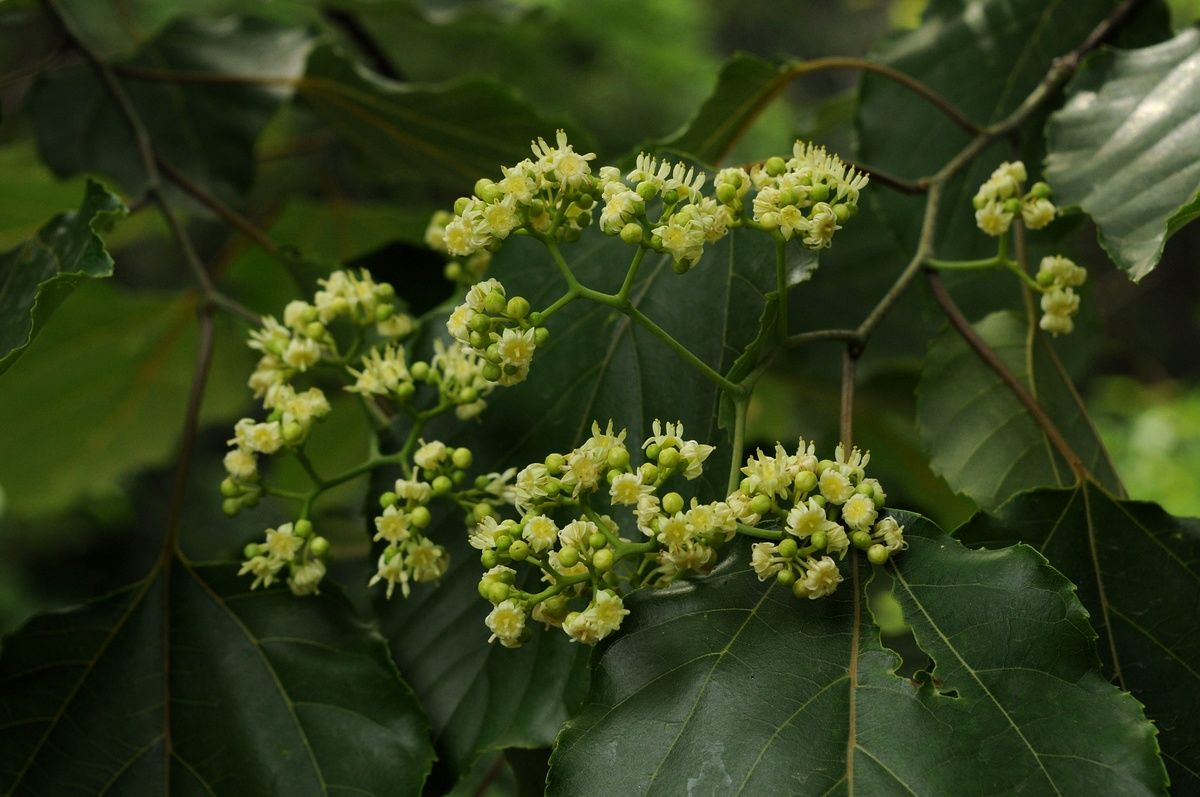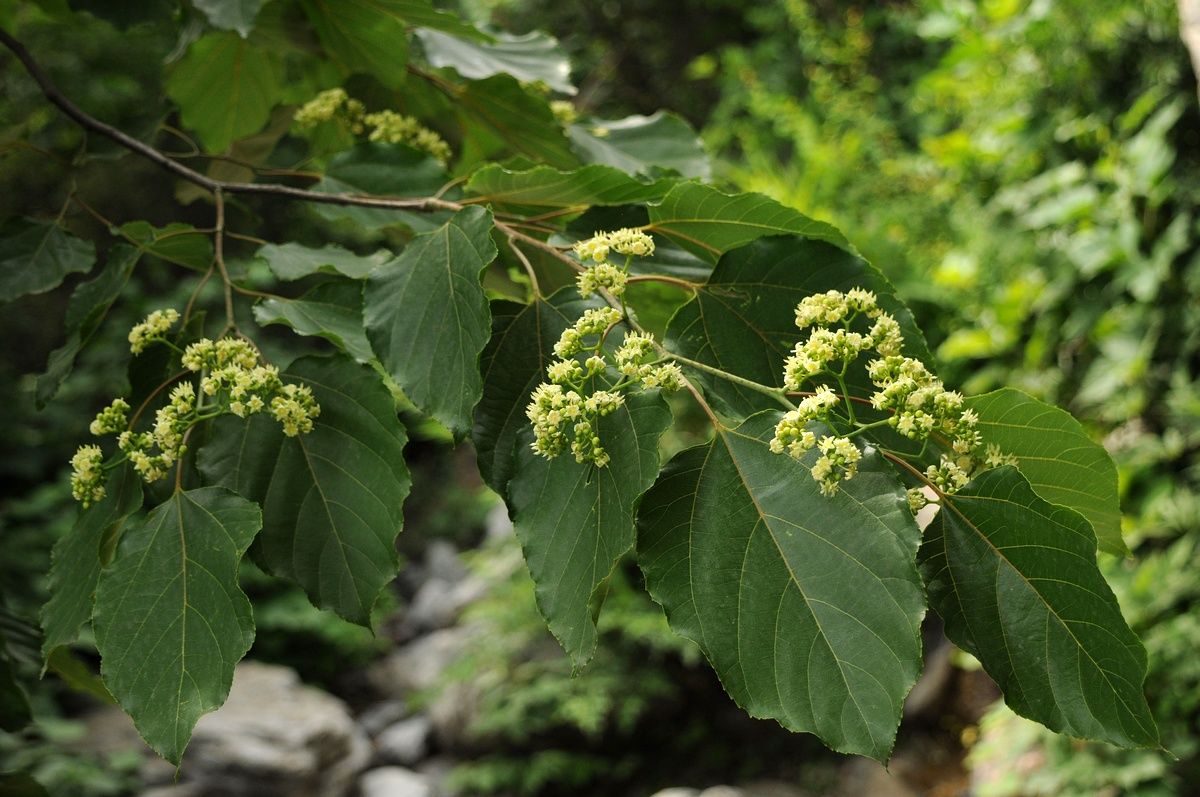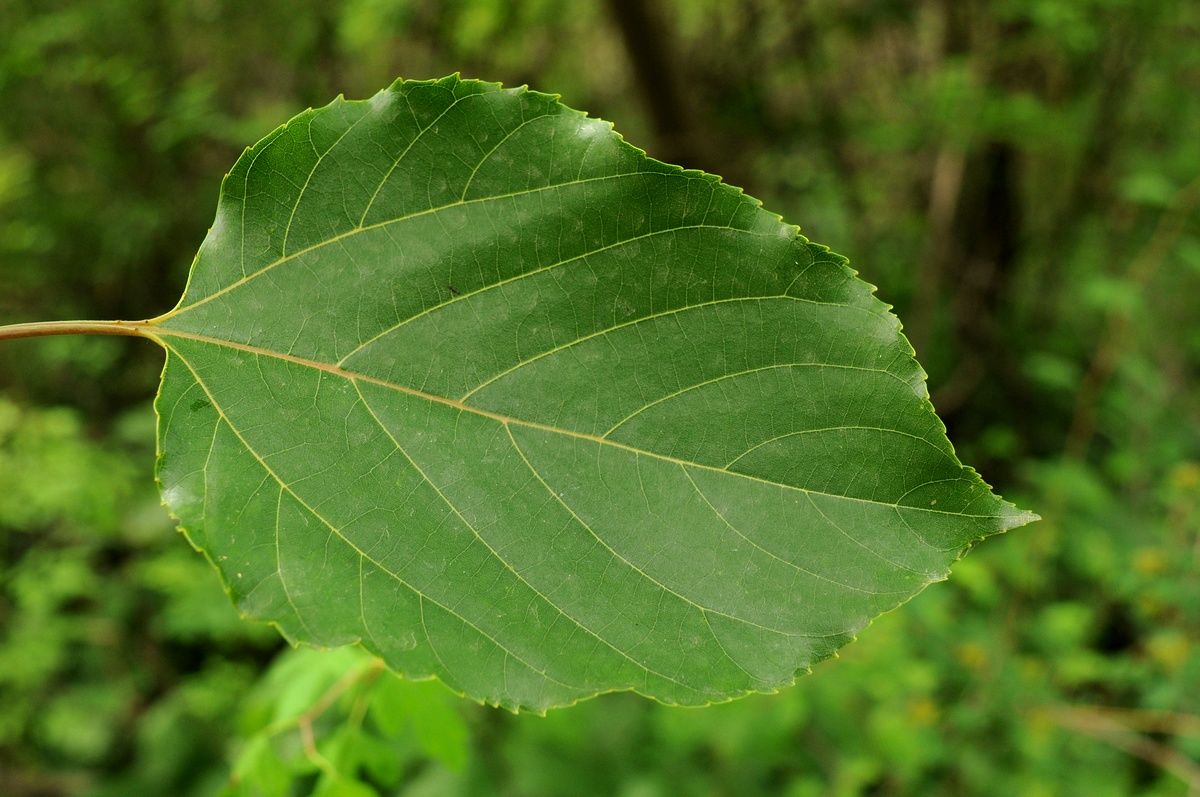Family: Rhamnaceae
Author: Thunb.
Bibliography: Nov. Gen. Pl.: 8 (1781)
Year: 1781
Status: accepted
Rank: species
Genus: Hovenia
Vegetable: False
Observations: Indian Subcontinent to Japan
Description
The Japanese raisintree, scientifically known as Hovenia dulcis, is a remarkable species native to a broad geographic range stretching from the Indian Subcontinent to Japan. This deciduous tree, classified under the family Rhamnaceae, captures interest for both its unique fruit and its ornamental appeal.
Hovenia dulcis typically thrives in temperate climates, exhibiting a preference for well-drained soils and substantial sunlight. It is a resilient species, often found in diverse environments within its native range, including forests and cultivated lands. The tree can grow up to 10–20 meters tall, characterized by its spreading branches and dense foliage, which provides a lush, leafy canopy.
One of the most striking features of the Japanese raisintree is its fruit. Unlike the fruit of many other trees, the edible portion of Hovenia dulcis is the swollen, fleshy peduncle that holds the seeds. These peduncles resemble raisins when dried, hence the common name “Japanese raisintree.” They are not only visually distinct but also sweet and edible, often consumed fresh or used in traditional recipes and medicinal preparations. The actual seeds, by contrast, are encased in a hard, dry capsule and are typically discarded.
The tree is valued not only for its fruit but also for its aesthetic contributions. Its expansive form and vibrant green leaves make it a popular choice for ornamental planting in gardens and parks. Additionally, during blooming season, it produces clusters of small, fragrant flowers that attract various pollinators, contributing to local biodiversity.
Since its first documented description in “Nova Genera Plantarum” by Thunberg in 1781, Hovenia dulcis has piqued the curiosity of botanists and horticulturists alike. Its adaptability and various uses have ensured that it remains a subject of ongoing study and cultivation.
In summary, the Japanese raisintree is a versatile and appealing plant with a rich history across Asia. Its unique, raisin-like fruit and appealing form provide both practical benefits and aesthetic value, making it a cherished species in its native regions and beyond.
Common Names
Eng: chinese raisintree, japanese raisintree
Deu: quaffbirne, japanisches mahagoni
Por: caju-japonês, chico-magro, mata-fome, passa-japonesa, tripa-de-galinha, uva-chinesa, uva-do-japão, uva-japonesa
Spa: sarmiento japonés
En: Japanese raisintree, Chinese raisintree, Japanese raisin tree, Oriental raisin tree, Japanese Raisin-tree, Kemponashi
Ab: Акамфеҭҵла
Af: Japanse rosyntjie boom, Japanse rosyntjieboom
Hy: Կոնֆետի ծառ
Az: Şirin hoveniya
Ca: Arbre de les panses
Zh: 北枳椇
Fr: Raisinier de Chine
De: Quaffbirne, Japanisches Mahagoni, Japanischer Rosinenbaum
He: עץ הצימוק היפני
It: Albero dell’uva passa, Hovenia dulcis, Ovenia dolce
Ja: Kenponashi
Ko: 헛개나무
Pl: Howenia słodka
Pt: Mata fome, Passa japonesa, Uva-do-Japão, Cajueiro-japonês, Caju-japonês, Chico-magro, Mata-fome, Passa-japonesa, Tripa-de-galinha, Uva-chinesa, Uva-japonesa, Uva japonesa
Ru: Конфетное дерево
Sr: Ховенија
Es: Sarmiento japonés, Hovenia dulcis, Pasa japonesa
Zh-tw: 枳椇
Tr: Şeker ağacı
Uz: Konfet daraxti
Synonyms
Distribution
- Assam (native)
- Bangladesh (native)
- China North-Central (native)
- China South-Central (native)
- China Southeast (native)
- East Himalaya (native)
- India (native)
- Japan (native)
- Korea (native)
- Thailand (native)
- Vietnam (native)
- West Himalaya (native)
- Argentina Northeast (introduced)
- Brazil Northeast (introduced)
- Brazil South (introduced)
- Brazil Southeast (introduced)
- Honduras (introduced)
- North Carolina (introduced)
- Paraguay (introduced)
- Peru (introduced)
- Texas (introduced)
Additional Images

© copyright of the Board of Trustees of the Royal Botanic Gardens, Kew.

© copyright of the Board of Trustees of the Royal Botanic Gardens, Kew.

© copyright of the Board of Trustees of the Royal Botanic Gardens, Kew.
Leaf
Taken Mar 9, 2022 by medeiro Noélia (cc-by-sa)
Taken May 28, 2022 by Gina Marcantonini (cc-by-sa)
Taken May 15, 2022 by Ribeiro Pimentel Ícaro (cc-by-sa)
Taken Jan 1, 2022 by Jeck Ferraz (cc-by-sa)
Taken Aug 30, 2021 by Pieter Verbrugghe (cc-by-sa)
Fruit
Taken Jul 8, 2021 by Pardías Silvina (cc-by-sa)
Taken Jun 14, 2020 by Oliveira Adílio (cc-by-sa)
Taken Jan 27, 2020 by Alfredo Pais (cc-by-sa)
Taken Apr 9, 2022 by Luciano Piske (cc-by-sa)
Taken Aug 6, 2020 by claude Marodon (cc-by-sa)
Flower
Taken Nov 22, 2022 by Joao Krahe (cc-by-sa)
Taken Jun 28, 2020 by Jakob Hellinger (cc-by-sa)
Taken Jun 19, 2021 by Makoto Makoto (cc-by-sa)
Taken Jun 29, 2022 by Jacques Zuber (cc-by-sa)
Taken Jul 15, 2021 by Mark Aarts (cc-by-sa)
Bark
Taken Nov 15, 2021 by Makoto Makoto (cc-by-sa)
Taken Oct 17, 2021 by Nathan Torres (cc-by-sa)
Taken Nov 27, 2021 by Matheus Bach (cc-by-sa)
Taken Jun 29, 2022 by Jacques Zuber (cc-by-sa)
Taken May 15, 2022 by Ribeiro Pimentel Ícaro (cc-by-sa)
Habit
Taken May 16, 2022 by Dieter Albrecht (cc-by-sa)
Taken Jun 28, 2022 by Renaudie Serge (cc-by-sa)
Taken Jul 10, 2021 by Boumlik Messaïli (cc-by-sa)
Taken Nov 27, 2021 by Matheus Bach (cc-by-sa)
Taken Jun 29, 2022 by Jacques Zuber (cc-by-sa)
Sources
- WFO (No URL)
- IPNI (No URL)
- GBIF (https://www.gbif.org/species/3039410)
- POWO (http://powo.science.kew.org/taxon/urn:lsid:ipni.org:names:717558-1)
- PlantNet (https://identify.plantnet.org/species/the-plant-list/Hovenia dulcis Thunb.)
Specifications
Growth habit>: Tree, Shrub

























